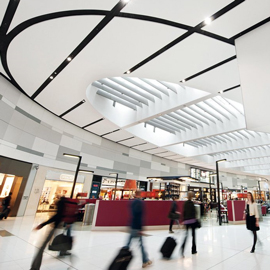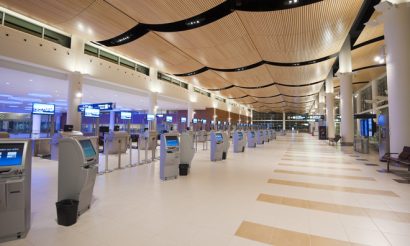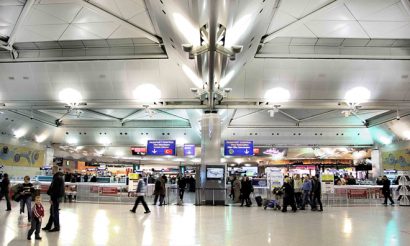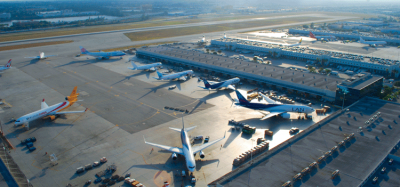Reducing the operating costs of airports
- Like
- Digg
- Del
- Tumblr
- VKontakte
- Buffer
- Love This
- Odnoklassniki
- Meneame
- Blogger
- Amazon
- Yahoo Mail
- Gmail
- AOL
- Newsvine
- HackerNews
- Evernote
- MySpace
- Mail.ru
- Viadeo
- Line
- Comments
- Yummly
- SMS
- Viber
- Telegram
- Subscribe
- Skype
- Facebook Messenger
- Kakao
- LiveJournal
- Yammer
- Edgar
- Fintel
- Mix
- Instapaper
- Copy Link
Posted: 4 August 2016 | Bailey Rory | 1 comment
Industry consultant Bailey Rory takes a look at the operating costs of airports and considers how expenditure can be cut in a way that still ensures smooth and safe operation.


Airports are complex, technologically advanced, and expensive. They’re on the forefront of modern travel, with tens of thousands of passengers moving through the largest hubs every day. They handle government travel, business travel, and leisure travel. They deal with thousands of tons of baggage, both checked and carried on. And, on top of all of these other demands, they must be safe and secure.
This means that an airport is costly to operate. Construction costs are soaring as both the cost of materials and labour continue to rise. Day-to-day operations are expensive, especially as security continues to expand and new technologies go into use. If airlines are to remain profitable, they have to figure out how to balance these costs without gouging their customer base with massively increased ticket prices. Costs have to be cut in a way that still facilitates the smooth and safe operation of the airport. Below are a few ways this can be done.
Automated Systems


Automated systems are already in place in many airports around the world. Traditionally, passengers must go up to the front desk in order to get their tickets and check their luggage. This is unavoidable for those who must check, but some passengers do not, due to the nature of the trip – if the luggage is being checked all the way through from another hub, for example. In some cases, this means they can skip a line and print tickets at a terminal. They may still have to wait through one line, but cutting demand in half of the lines means fewer desks and workers are needed. A kiosk costs a lot up front, but it can expedite passenger movement through the airport and reduce daily operating costs tremendously, giving it a good return on investment (ROI) in the long run.
Advanced computer systems can also be used to integrate passenger records, sales records, trip itineraries and other necessary data. This puts the proper information all at a worker’s fingertips in seconds, with little input from the customer, streamlining the process.
Fabric Buildings
Airports can also slash prices through the use of fabric buildings, spurning the traditional sheet metal construction of smaller aircraft hangars. This reduces up-front costs during construction. It also reduces maintenance and repair costs, as these buildings can often be quickly and easily repaired – and, in some cases, they can be entirely replaced for less than the cost of traditional building repairs. They still offer tremendous protection from the elements, provide more natural light for workers, and keep everything organized properly. Additionally, when the buildings need to be upgraded or expanded, it’s easier to do with a fabric building than a traditional brick-and-mortar aircraft hangar.
Additional upsides of fabric structures include:
- Long-lasting durability
- Quick construction
- Portability and relocation
- Flexibility of use and versatility
- Resistance to sun damage
- Insulation and energy efficiency
- Fireproof construction
Fabric buildings work as hangers for large and small aircraft, baggage storage, air cargo facilities, ground support buildings, and more.
LED Lighting


On the ground level, LED lighting lowers costs instantly through the reduction in raw energy consumption. Aside from natural lighting, it is the cheapest and easiest way to illuminate the airport. The cost of an overhaul is now lower than it has ever been, as LED technology becomes more prevalent in all parts of society.
However, the use of LED lighting goes beyond mere energy consumption, as many LED bulbs are rated for 22 years or more with standard usage. Therefore, the offshoot of this technology is that maintenance and repair costs drop as well. When lights last from four to ten-times longer, man-hours spent replacing bulbs drop according and pressure on the staff decreases. In some cases, overall staff numbers can be decreased with the additional time created. LED lights can be installed directly during construction, with hard-wired solutions, or existing fixtures can often be used with new bulbs.
Whether changes are big or small in nature, one thing is clear: airports need to become more energy-efficient across every facet of operations. Only with proper training in best practices, upgrades to systems and facilities, and ensuring energy efficiency standards are met and kept throughout changes to the industry can airports stay competitive and lean throughout changes in the market.
Biography
Bailey Rory has worked with a variety of municipal airports in capacities such as grounds planning, maintenance, and new construction consultation.



















Great piece Bailey! The part about automated systems caught my attention. I just wanted to add that automating internal operations opens up another avenue for cost savings while maintaining compliance. Here’s an article on how Richmond International Airport implemented an identity management solution: http://www.airportimprovement.com/article/richmond-intl-pitches-paper-saves-time-new-identity-management-software